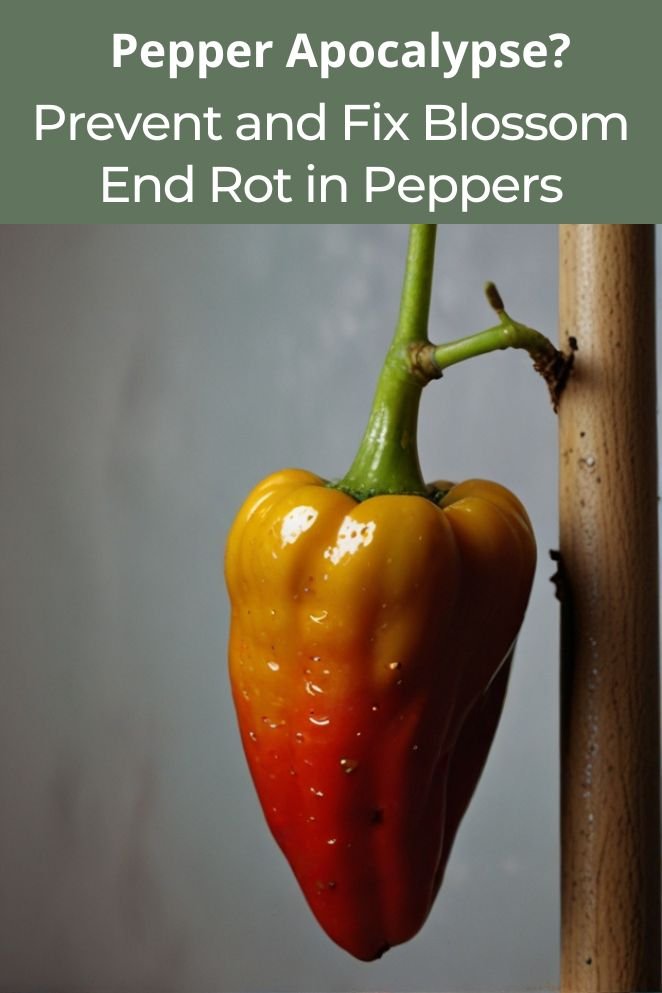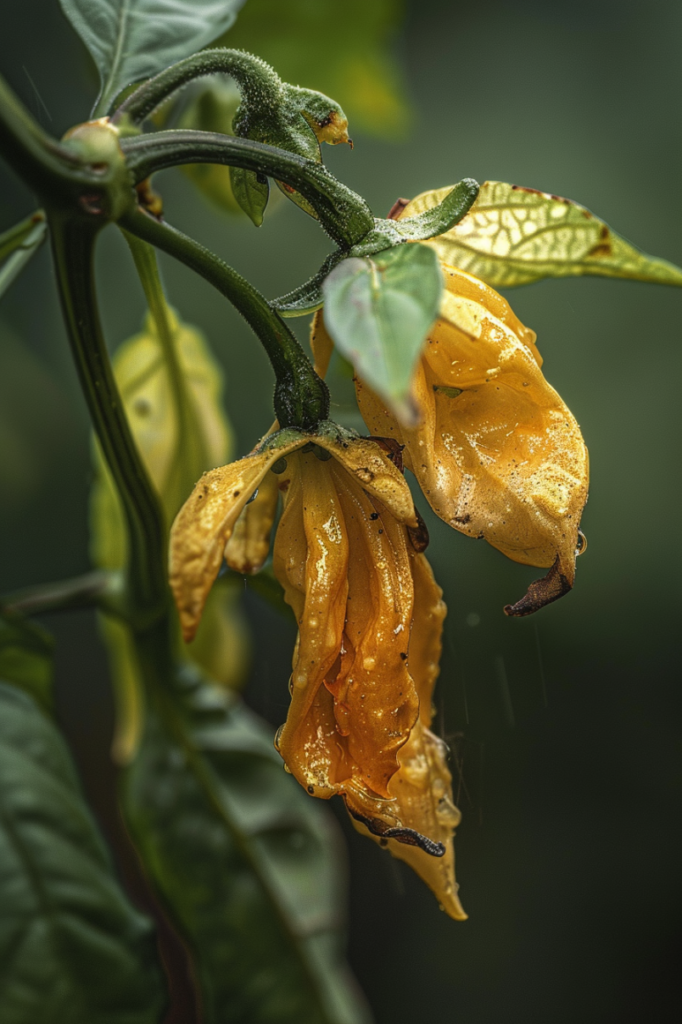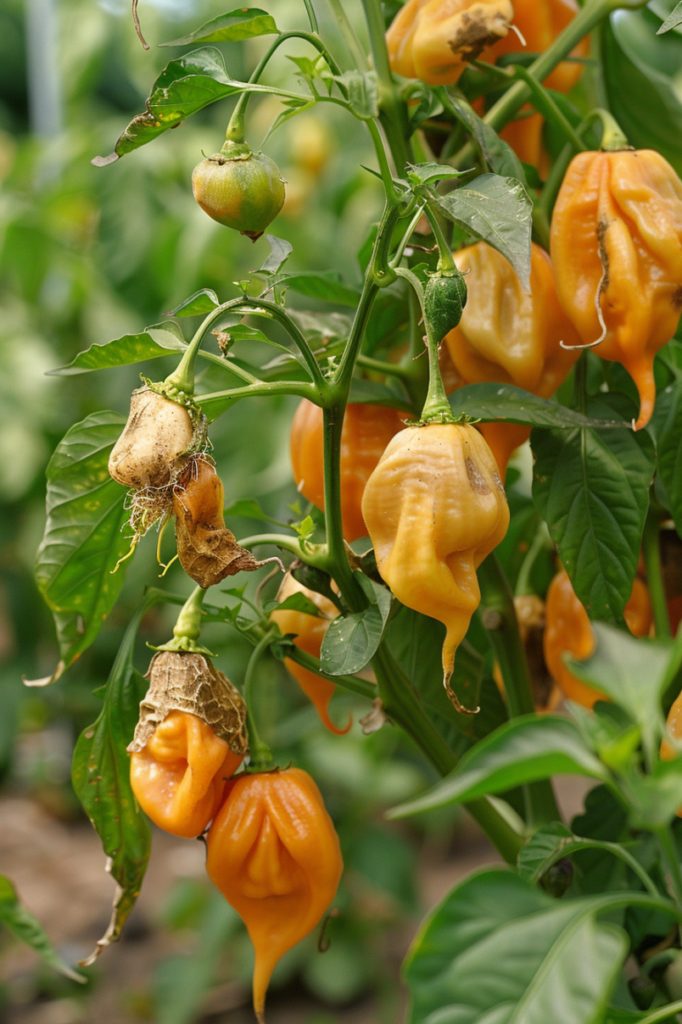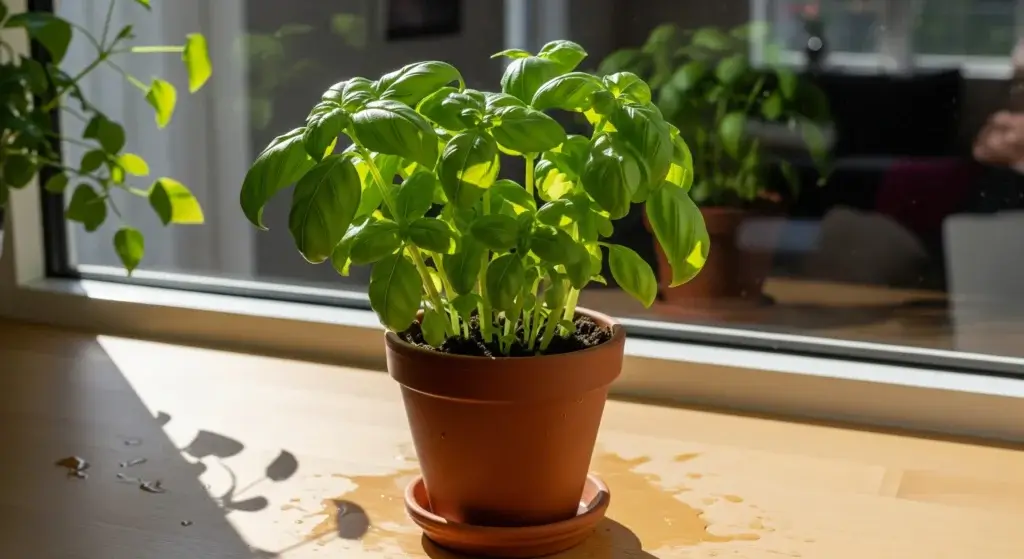
Blossom end rot (BER) is a common issue that affects pepper plants, causing the fruit to develop a sunken, rotting area on the blossom end.
This condition can be frustrating for gardeners, as it can lead to significant yield loss and affect the overall health of the plant.
In this article, we’ll explore the causes of blossom end rot, how to prevent it, and what to do if your peppers are already affected.
Causes of Blossom End Rot in Peppers
Blossom end rot can be a frustrating challenge for pepper growers, but by understanding its underlying causes, it becomes possible to take proactive measures to prevent its occurrence.
Calcium deficiency
Calcium plays a crucial role in the development of pepper fruits, particularly in forming strong cell walls.
When peppers lack sufficient calcium, their fruit may exhibit symptoms of blossom end rot, appearing as dark, sunken lesions at the blossom end.
Ensuring an adequate supply of calcium is essential for maintaining the structural integrity of the fruit and preventing rot.
- Read also: Save Your Tomatoes: Tips on Blossom End Rot in Tomatoes
- Read also: Top Tips to Protect Vegetables From Pests
Uneven watering
Consistent and adequate moisture levels are vital for proper calcium uptake in pepper plants.
Inconsistent watering practices, such as allowing the soil to dry out too much between watering sessions or overwatering, can disrupt calcium absorption.
When the soil is too dry, the plant struggles to draw in calcium, while excess water can lead to waterlogged conditions that make the fruit more susceptible to rot.
Rapid fluctuations in temperature
Pepper plants are sensitive to rapid changes in temperature, particularly during fruit development.
Fluctuations in temperature stress the plant and can disrupt the transport of calcium, leading to blossom end rot.
This is especially problematic in regions with unpredictable weather patterns or significant day-to-night temperature swings.
High nitrogen levels
While nitrogen is essential for promoting healthy plant growth, excessive levels can interfere with calcium absorption in pepper plants.
High nitrogen levels create an imbalance in the plant’s nutrient uptake, leading to reduced calcium availability and increased susceptibility to blossom end rot.

Symptoms of Blossom End Rot in Peppers
Blossom end rot (BER) is a common challenge faced by pepper growers, characterized by the development of sunken, rotting areas on the fruit’s blossom end.
- Dark spots on peppers: Dark spots appearing on the bottom or sides of peppers are a telltale sign of blossom end rot.
- Water-soaked lesions: In the early stages of blossom end rot, affected peppers may exhibit water-soaked lesions on their bottoms.
- Sunken, leathery spots: As blossom end rot advances, the water-soaked lesions may evolve into sunken, leathery spots on the fruit’s surface.
- Premature color change: Peppers affected by blossom end rot may undergo premature color changes, altering their appearance before reaching full maturity.
- Mold growth: Under moist conditions, opportunistic molds may develop on the surface of peppers affected by blossom end rot.
- Discoloration on sides of fruit: While blossom end rot typically manifests on the bottom of peppers, it can also occur on the sides near the blossom end.
How to Prevent Blossom End Rot
Preventing blossom end rot is crucial, as it can be difficult to treat once it’s developed.
Here are some tips to help you prevent BER:
Maintain consistent moisture
Consistent moisture levels are key to preventing blossom end rot.
Aim to water your pepper plants deeply and regularly, ensuring that the soil remains consistently moist but not waterlogged.
Avoid fluctuations between dry and soggy conditions, as these can disrupt calcium uptake and contribute to the development of BER.
Soil testing and amending
Before planting your peppers, conduct a soil test to assess calcium levels.
If your soil is deficient in calcium, amend it with supplements such as lime or gypsum to bolster calcium availability.
By addressing any deficiencies upfront, you can provide your plants with the essential nutrients they need to produce healthy, rot-free fruit.
Avoid overfertilizing
While fertilization is essential for plant growth, overapplication of nitrogen-rich fertilizers can exacerbate the risk of blossom end rot.
Opt for a balanced fertilizer formulation and apply it according to recommended rates.
Excessive nitrogen can disrupt the delicate nutrient balance in the soil, impeding calcium uptake and predisposing plants to BER.
Mulching
Mulching around pepper plants serves multiple purposes in preventing blossom end rot.
A layer of organic mulch helps retain soil moisture, reducing the likelihood of drought stress-induced calcium deficiency.
Additionally, mulch acts as a barrier, moderating soil temperature fluctuations and creating a more stable growing environment for your peppers.
Choose resistant varieties
When selecting pepper varieties for your garden, consider opting for cultivars known to exhibit resistance to blossom end rot.
These varieties are specifically bred to be less susceptible to the condition, offering added protection against BER-related crop losses.
Consult with local gardening experts or seed catalogs to identify suitable resistant varieties for your region.

Dealing with Blossom End Rot
When blossom end rot strikes your pepper plants, it’s important to take swift action to minimize its impact and prevent further spread of the condition.
Here’s a step-by-step guide to dealing with blossom end rot:
Identify affected peppers
Carefully inspect your pepper plants for signs of blossom end rot.
Affected peppers will display characteristic symptoms, such as dark, sunken lesions on the blossom end.
Remove affected fruit
Unfortunately, peppers affected by blossom end rot are not salvageable.
It’s crucial to promptly remove any affected fruit from the plant to prevent the spread of disease.
Use clean, sharp pruning shears to carefully cut away the affected peppers, disposing of them properly.
Preventative measures
While affected peppers cannot be saved, focus on implementing preventative measures to protect the remaining fruit.
Maintain consistent moisture levels in the soil, amend soil with calcium supplements if necessary, and avoid overfertilizing with nitrogen-rich fertilizers.
Additionally, consider mulching around pepper plants to regulate soil moisture and temperature.
Monitor remaining fruit
Keep a close eye on the remaining peppers to ensure they remain healthy and free from signs of blossom end rot.
Regularly inspect the plants for any new symptoms and continue to implement preventative measures as needed.
Seek professional advice
If you’re unsure how to address blossom end rot or if the condition persists despite your efforts, consider seeking advice from gardening experts or agricultural extension services.
They can provide personalized guidance and recommendations based on your specific circumstances.

- Read also: Garden Detectives: Cracking The Signs of Pest in Vegetables
- Read also: A Guide to Composting for Vegetable Gardens
Conclusion
Blossom end rot is a common issue that can affect pepper plants, but it’s not inevitable.
By understanding the causes of BER and taking preventative measures, you can reduce the risk of this condition and enjoy a healthy and productive pepper harvest.
Remember to maintain consistent moisture, test your soil for calcium levels, avoid overfertilizing, mulch around your plants, and choose resistant varieties to minimize the risk of blossom end rot.
FAQs
Calcium deficiency is the primary culprit, as it’s essential for cell wall development in peppers.
Maintain consistent moisture, test your soil for calcium levels, avoid overfertilizing, mulch around your plants, and choose resistant varieties.
Unfortunately, affected peppers are not salvageable. Remove them from the plant to prevent the spread of disease and encourage healthier fruit development.



